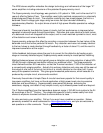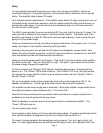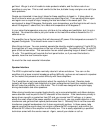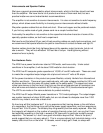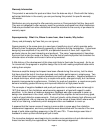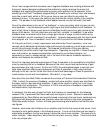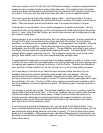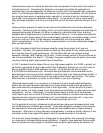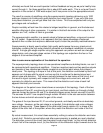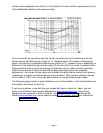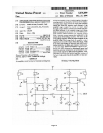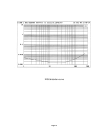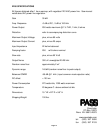Page 6
Warranty Information
This product is warranted for parts and labor from the date we ship it. Check with the factory
authorized distributor in the country you are purchasing this product for specific warranty
information.
Distributors are only required to offer warranty service on Pass products that they have sold.
They are not obligated to offer warranty repair for products purchased from other distributors.
Products purchased from other distributors should be returned to the country of purchase for
warranty repair.
Supersymmetry: What it is, Where it came from, How it works, Why bother
(theory and philosophy by Pass that you can ignore)
Supersymmetry is the name given to a new type of amplifying circuit, which operates quite
differently than the designs presently appearing in literature and the marketplace. I have been
designing new amplifiers all my adult life, and patented several of them, but I regard this
particular idea as the most interesting and profound. The name “supersymmetry” describes
the circuit but is also the name of a theory from the field of particle physics that considers the
ultimate nature of matter and forces in terms of symmetries.
A little history of the development of this idea might help to illuminate the concept. As far as
I’m concerned, the progress in amplifier design has to do with making amplifiers better while
making them simpler.
Numerous amplifier design techniques have been offered during this century, but the ideas
that have stood the test of time have delivered much better performance in simple ways. Two
of the best ideas have been negative feedback and push-pull operation. Negative feedback is
a simple technique, which requires only a couple more parts, arranged simply, but it achieves
dramatic improvements in performance. Similarly for push-pull operation, a couple more parts
delivers incredibly greater efficiency and improved distortion at high power levels.
The concepts of negative feedback and push-pull operation in amplifiers were old enough in
1970 that some of their limitations were becoming apparent, at least with regard to audio
amplifiers. In the hands of mediocre designers, feedback was often overused to cover up
design sins elsewhere in the circuit, with the result that the amplifier did not sound very good,
in spite of good distortion measurements. Push-pull circuits, while allowing high efficiency and
cheap manufacture, did not improve the character of the sound at lower levels, where we do
most of our listening, a deficiency which designers often use feedback to cover up.
It appears that the human sense of hearing is more subtle in some ways than distortion
measurement apparatus, and many audiophiles were dissatisfied with the results of the new
breed of solid state amplifiers appearing in the 60’s and 70’s. These designs used lots of
feedback to clean up their efficient push-pull circuits.
The innovative designers were beginning to consider some variations of and alternatives to
these tried and mostly true approaches, and some new designs appeared.




